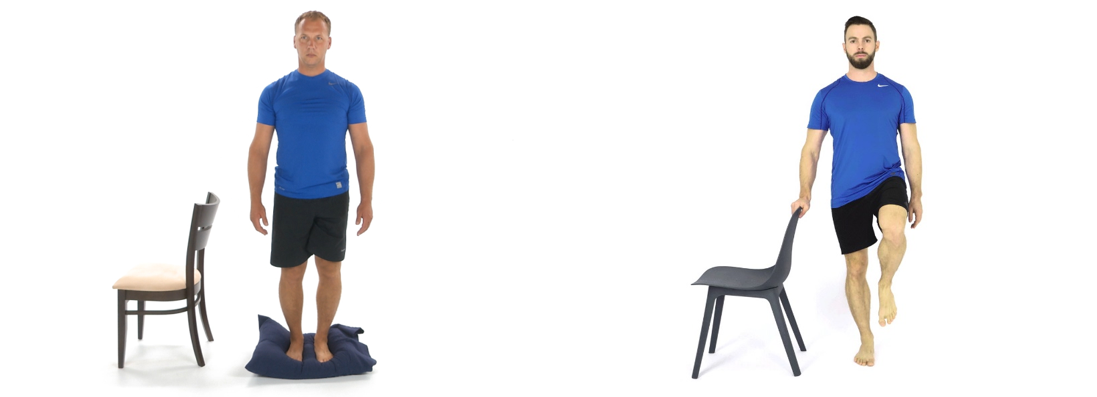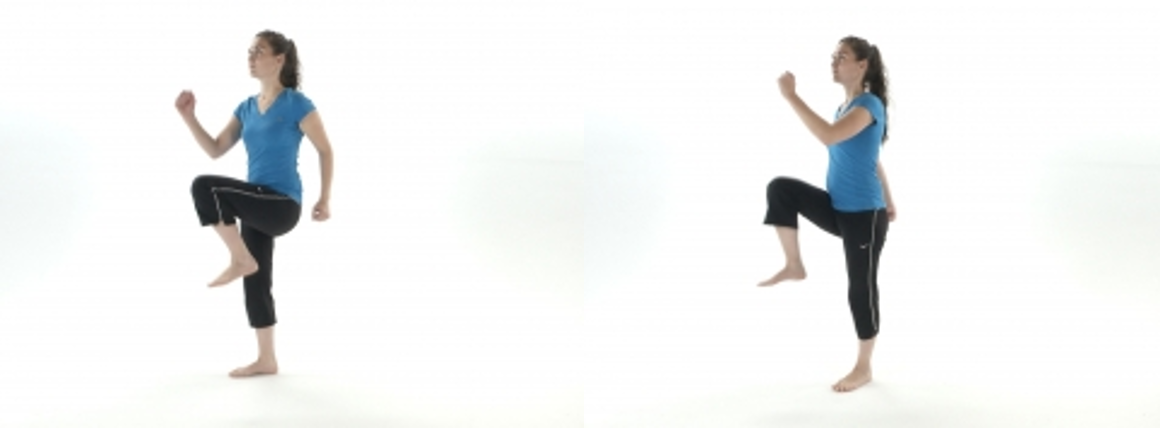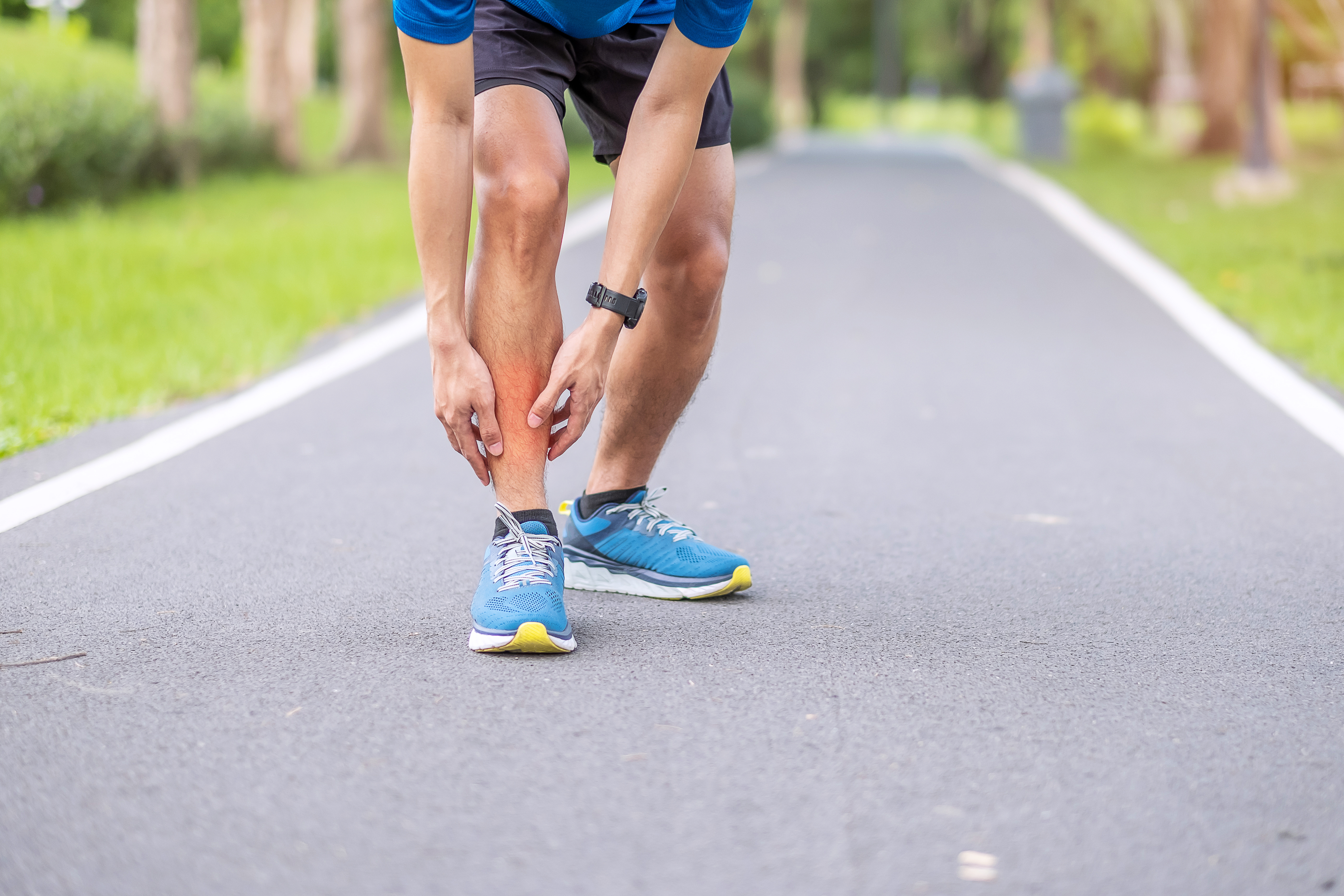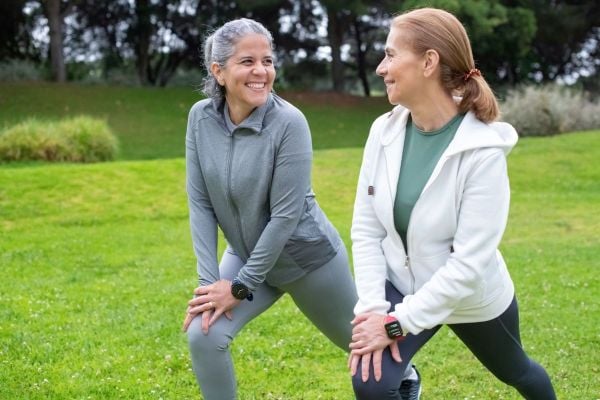
5 movements and exercises to prepare you for hiking

Note: The exercises and/or movements in this blog are not intended to replace the advice of your clinician. If you are unsure, please speak to your clinician before attempting any of the suggestions below.
As the days get warmer and longer, you may be thinking of going hiking, or an adventure outside with friends and family. Here are some tips that can help you get ready for your adventure, make the most out of your time, and prevent injury.
With the uneven terrain encountered in the wilderness, it is important to have good balance to help prevent falls and injuries. Ankle sprains are a common injury seen while hiking and balance training has shown to help reduce the risk of these injuries.
Foundational balance
To get started, try these foundational balance exercises. With any balance exercises, be sure to practice in a safe environment near a wall, table, or chair to use for support as needed to prevent falls.
Start by standing with your feet close together and trying to maintain your balance. Next, try putting one foot in front of the other to practice tandem stance, the closer your front leg heel is to your back leg toe the harder it will be.
You can also try standing on a single leg, trying to hold your balance for 30 seconds. To mimic an unstable surface, try placing a pillow on the floor and work toward trying each balancing activity on that surface for up to 30 seconds.

Pelvic drop
Another important area to focus on is the strength of muscles around your hips. Weak glute muscles can contribute to problems with knees, ankles and can even affect our lower backs. An effective way to work these muscles is the pelvic drop exercise.
To perform this exercise, begin by standing with one foot on the edge of a step or the bottom stair of a staircase and hold onto a chair or railing for support. Make sure you are standing tall and gently drawing your belly button toward your spine to engage your abdominal muscles.
Keep the leg you are standing on straight while slowly lowering the foot hanging off the step towards the floor. Next, slowly lift the leg hanging off the step upward to return to a level pelvis position. Once you have completed 5-15 repetitions on one leg, switch to the other leg and repeat.
Dynamic movements
Do you stretch before your hike? It is important with any physical activity to make sure you warm-up your muscles before you start to help prevent injuries. Try switching your static stretching routine (or no warm-up routine) for a dynamic warm-up before setting out on a hike.
Dynamic stretching is a more effective way to get the muscles and joints prepared before physical activity. It is especially important to warm-up the lower body for hiking as the legs do most of the work. Before heading out down the trail try the dynamic movements mentioned below to warm-up your muscles and joints.
Marching movements
Marching movements can help warm up the lower and upper body. Do some walking marches by bringing one knee up high and swinging the opposite arm forwards, then repeating with the other leg and arm.

Forward and side lunges
Forward and side lunges help to warm up the hips, knees, and ankle joints and muscles. In a controlled manner, while keeping your back straight and your knee caps aligned with your second toes, lean slightly forward just like you were sitting in a chair, keeping your heels on the ground.
Push through your heels and activate your glutes to come back to standing. Repeat this 5-10 times on each leg in the different lunge positions.

Toe and heel walks
Toe and heel walks can help warm-up the calf and shin muscles. Start with 10-20 steps on the balls of the feet followed by 10-20 steps on the heels and repeat 2-3 times. Static stretching routines still have a place with physical activity; do some good stretches after finishing your hike before you head home.

Hiking safety tips
- Tell someone where you are going and when you will be back.
- Research and plan a route, trailhead signage is not always reliable.
- Make sure you have more than enough water and food for your trip.
- Pack appropriate clothing for the weather and terrain.
- Protect yourself from the sun with sunscreen, a hat, and sunglasses.
- Practice carrying a backpack. It is important to have all the appropriate gear, but you do not want your packs to weigh more than 25% of your body weight.
- Make sure you have proper footwear, ideally with good ankle support.
Hiking is a fun, low-cost activity that can help you meet your physical activity goals while enjoying nature.
For more information on how Lifemark clinicians can help you prepare for summer activities such as hiking, check out our locations page to find a clinic near you or book online.
This blog was written by Jessica Solinger, a Physiotherapy student at the University of Alberta




